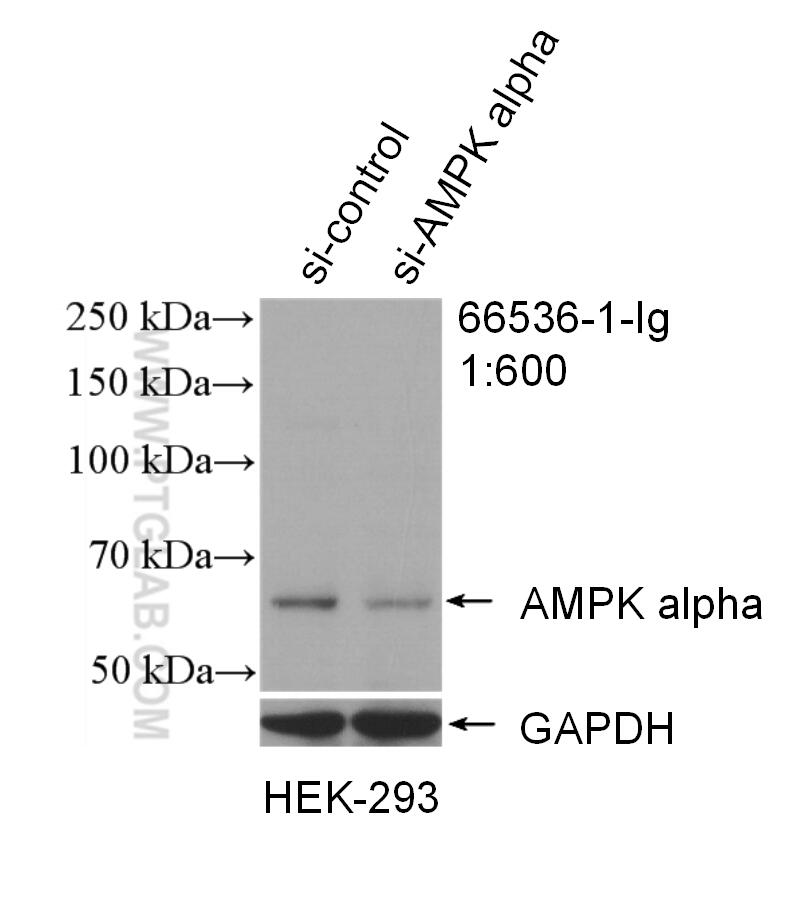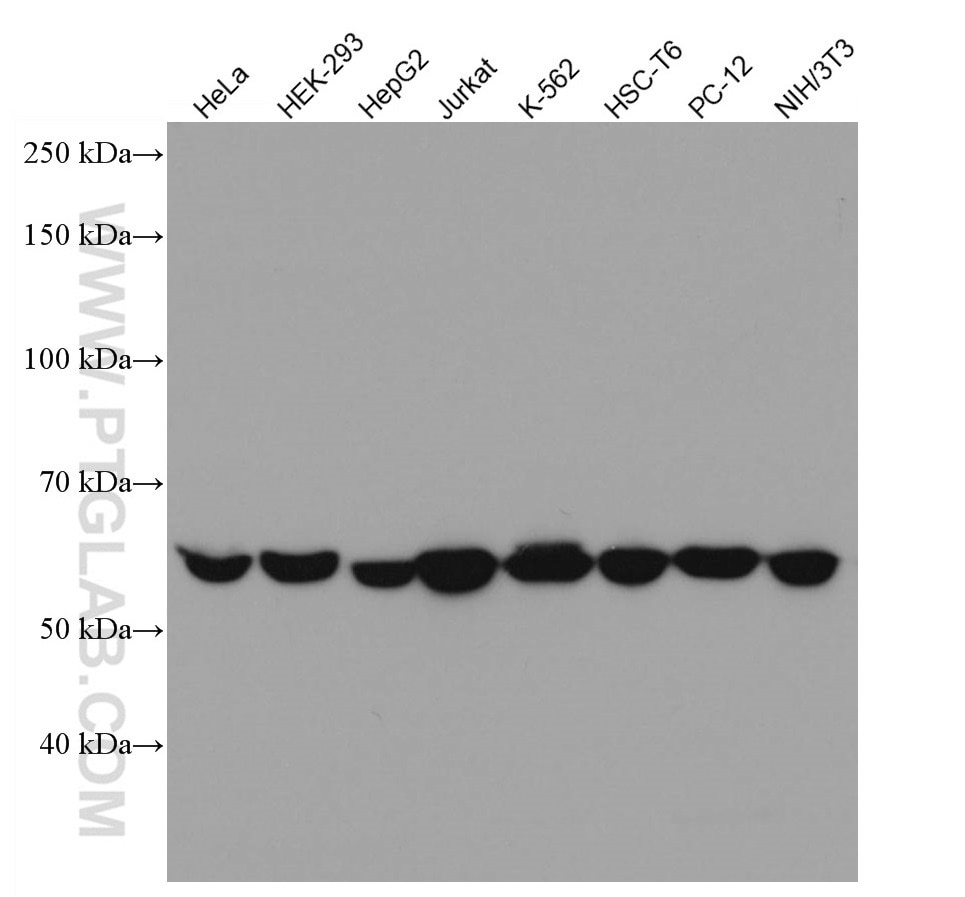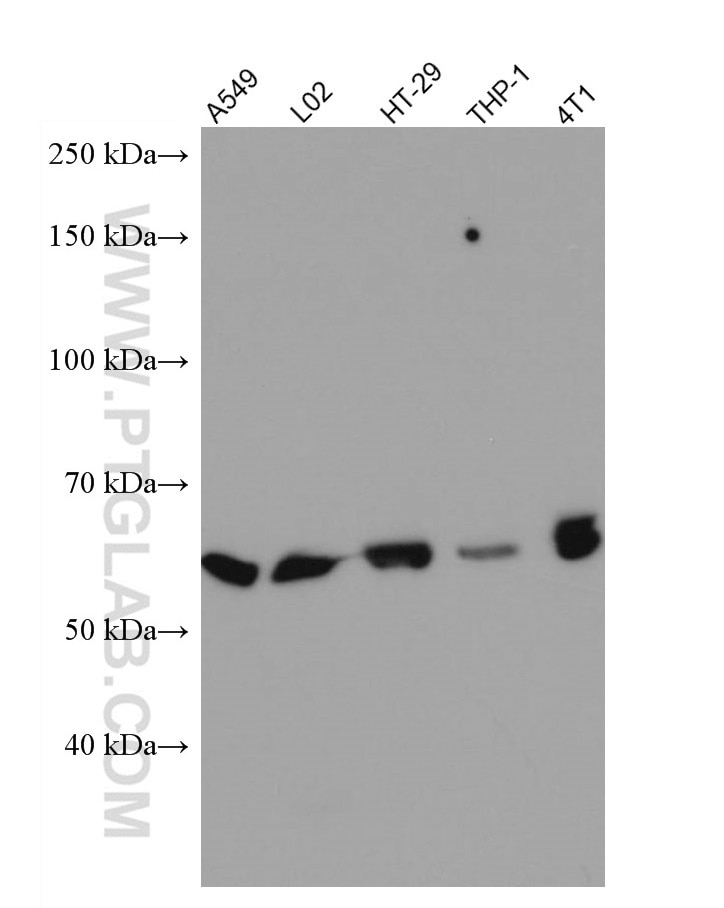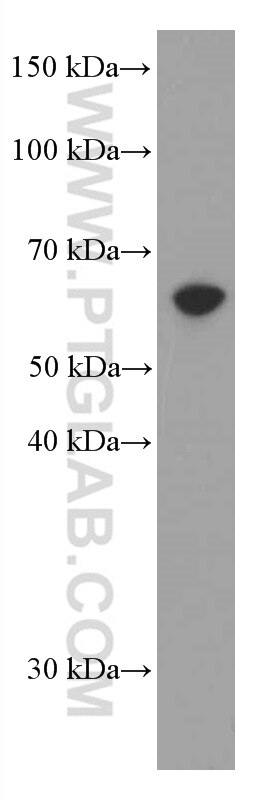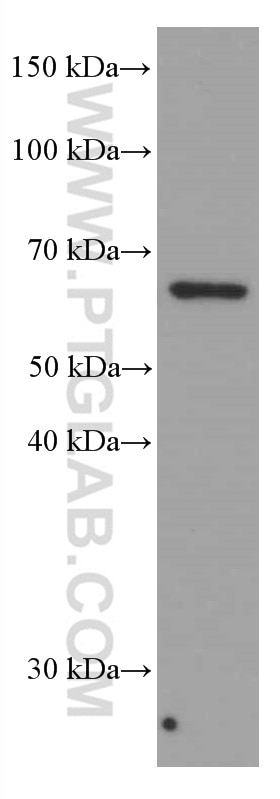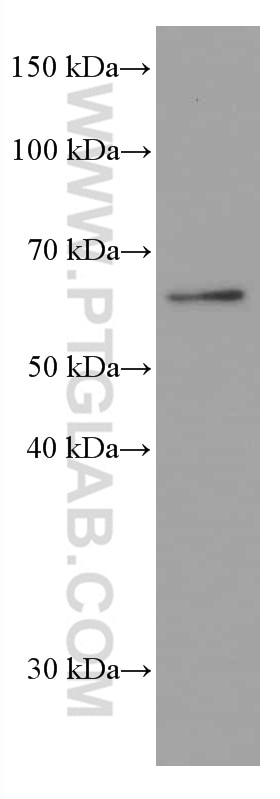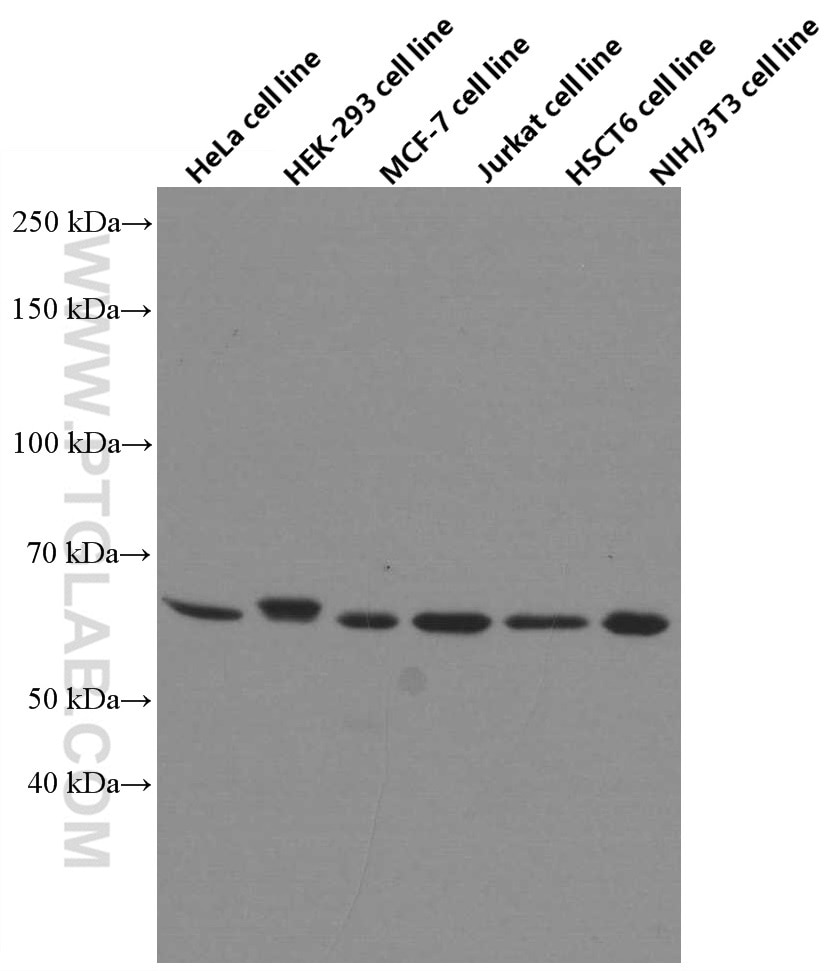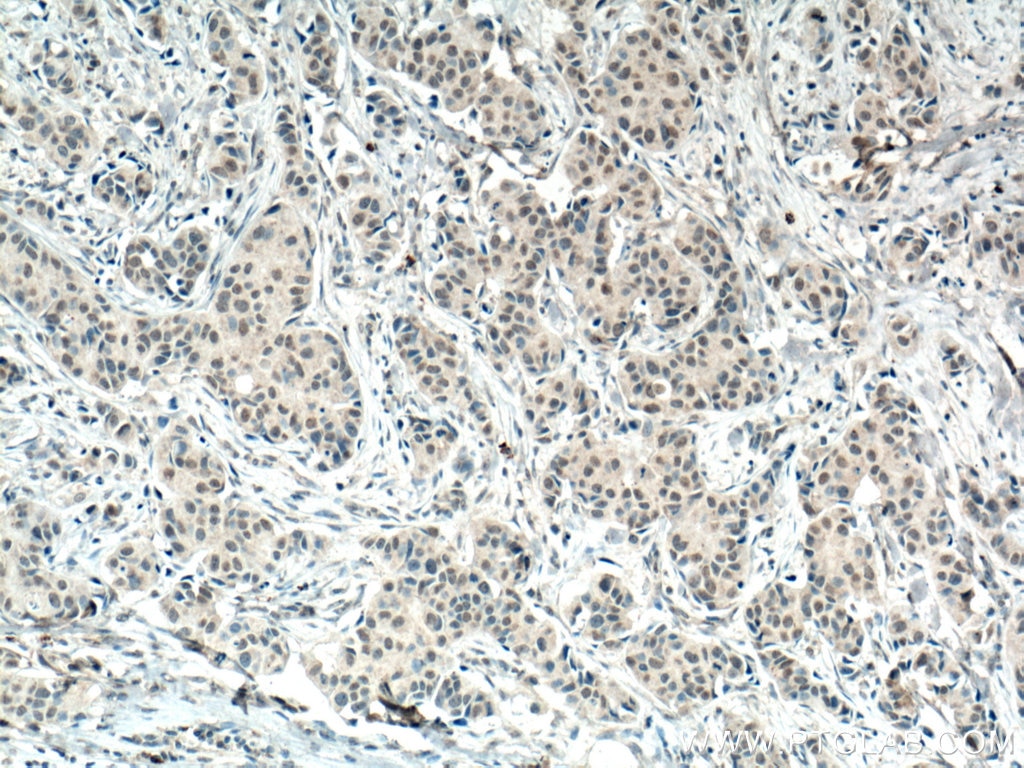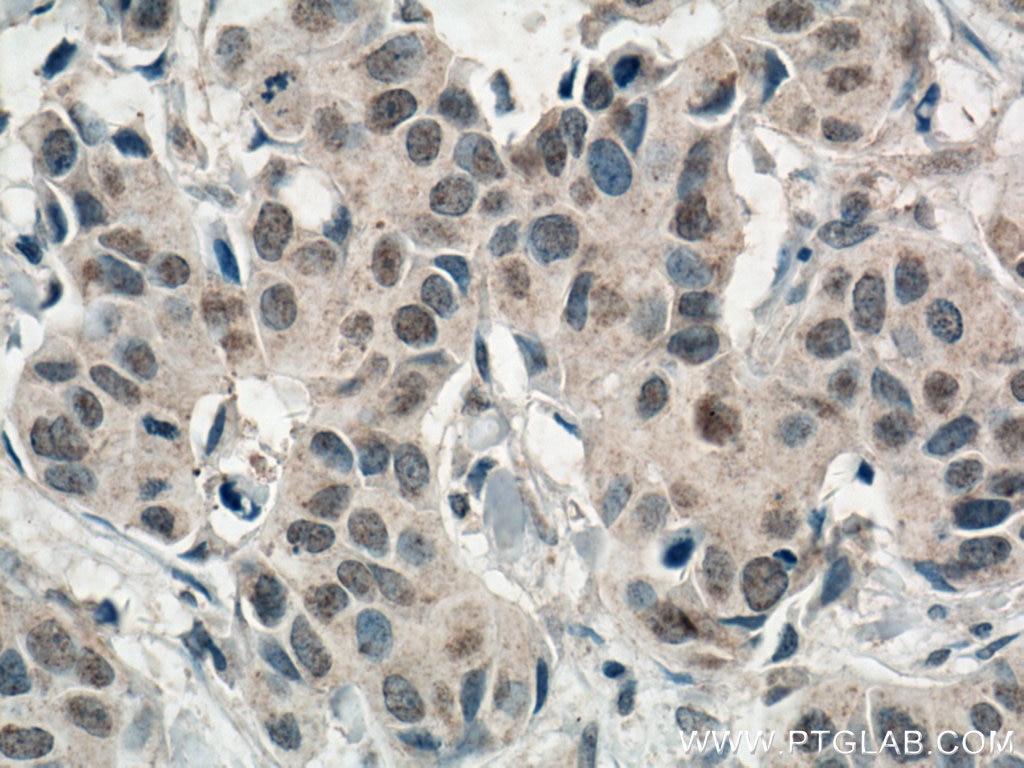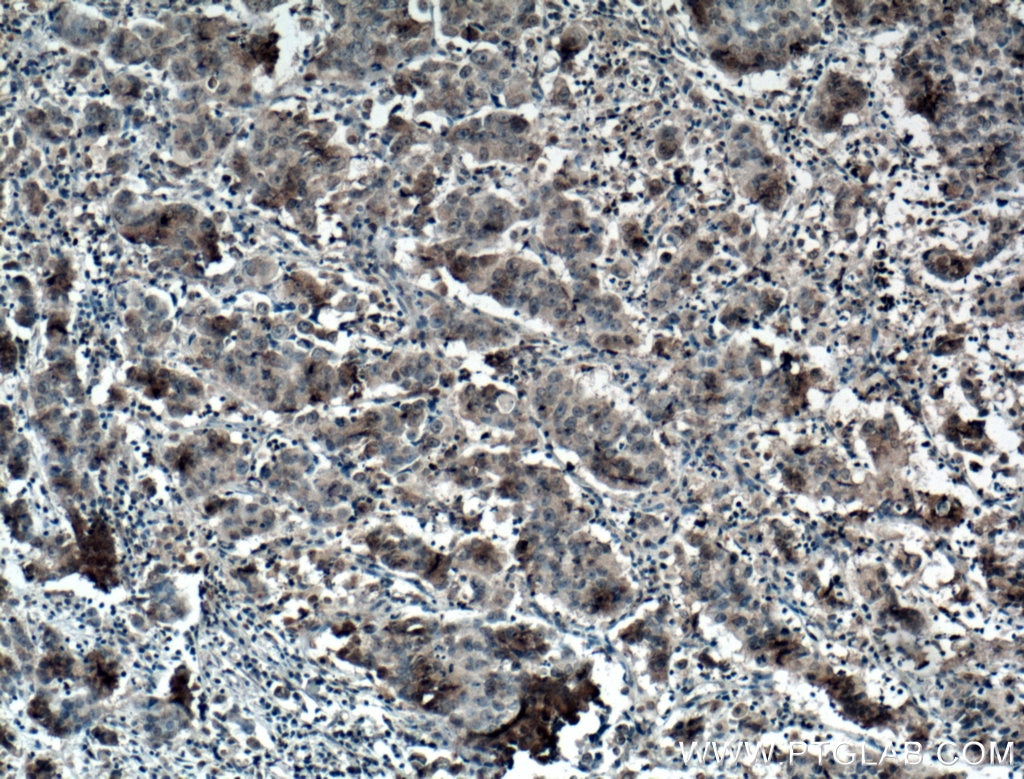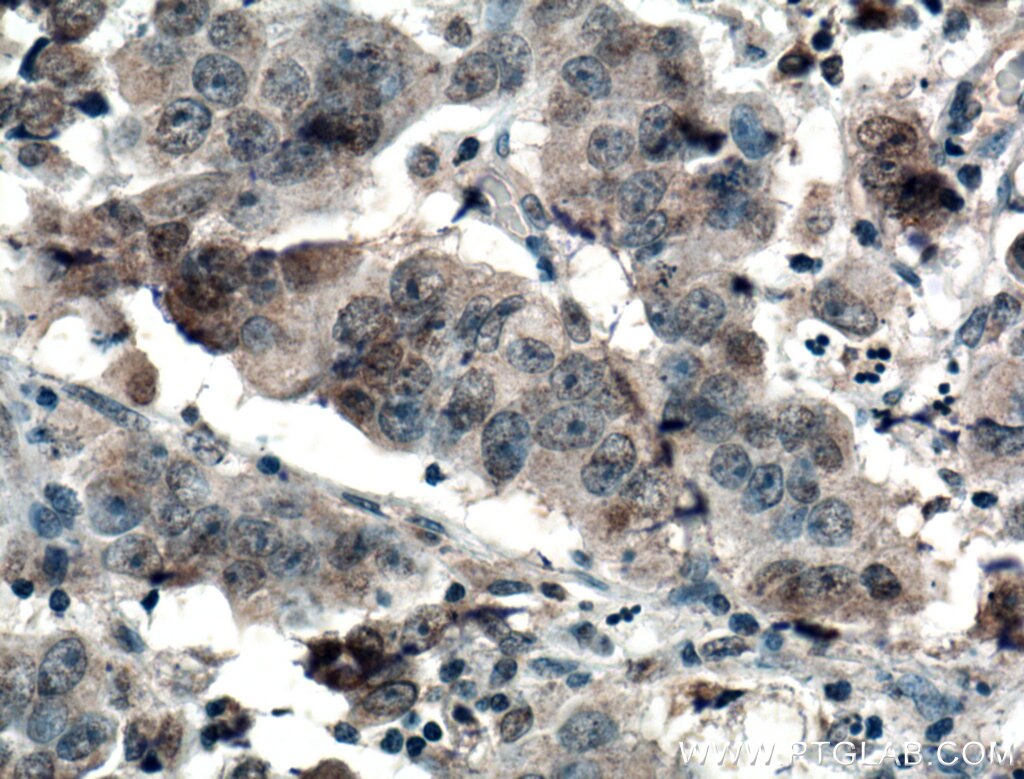Validation Data Gallery
Tested Applications
| Positive WB detected in | HeLa cells, Jurkat cells, HSC-T6 cells, NIH/3T3 cells, HEK-293 cells, A549 cells, HepG2 cells, K-562 cells, PC-12 cells, L02 cells, HT-29 cells, THP-1 cells, 4T1 cells, MCF-7 cells |
| Positive IHC detected in | human breast cancer tissue, human prostate cancer tissue Note: suggested antigen retrieval with TE buffer pH 9.0; (*) Alternatively, antigen retrieval may be performed with citrate buffer pH 6.0 |
Recommended dilution
| Application | Dilution |
|---|---|
| Western Blot (WB) | WB : 1:500-1:3000 |
| Immunohistochemistry (IHC) | IHC : 1:50-1:500 |
| It is recommended that this reagent should be titrated in each testing system to obtain optimal results. | |
| Sample-dependent, Check data in validation data gallery. | |
Published Applications
| KD/KO | See 1 publications below |
| WB | See 75 publications below |
| IHC | See 4 publications below |
| FC | See 1 publications below |
| CoIP | See 1 publications below |
Product Information
66536-1-Ig targets AMPK Alpha 1 in WB, IHC, CoIP, ELISA applications and shows reactivity with Human, Rat, Mouse samples.
| Tested Reactivity | Human, Rat, Mouse |
| Cited Reactivity | human, mouse, rat, pig, hamster, goat |
| Host / Isotype | Mouse / IgG1 |
| Class | Monoclonal |
| Type | Antibody |
| Immunogen |
CatNo: Ag24744 Product name: Recombinant human AMPK alpha protein Source: e coli.-derived, PET30a Tag: 6*His Domain: 1-207 aa of BC012622 Sequence: MATAEKQKHDGRVKIGHYILGDTLGVGTFGKVKVGKHELTGHKVAVKILNRQKIRSLDVVGKIRREIQNLKLFRHPHIIKLYQVISTPSDIFMVMEYVSGGELFDYICKNGRLDEKESRRLFQQILSGVDYCHRHMVVHRDLKPENVLLDAHMNAKIADFGLSNMMSDGEFLRTSCGSPNYAAPEVISGRDCNIIRILTSQFTNYQH 相同性解析による交差性が予測される生物種 |
| Full Name | protein kinase, AMP-activated, alpha 1 catalytic subunit |
| Calculated molecular weight | 63 kDa |
| Observed molecular weight | 64 kDa |
| GenBank accession number | BC012622 |
| Gene Symbol | AMPK Alpha 1 |
| Gene ID (NCBI) | 5562 |
| RRID | AB_2881899 |
| Conjugate | Unconjugated |
| Form | |
| Form | Liquid |
| Purification Method | Protein G purification |
| UNIPROT ID | Q13131 |
| Storage Buffer | PBS with 0.02% sodium azide and 50% glycerol{{ptg:BufferTemp}}7.3 |
| Storage Conditions | Store at -20°C. Stable for one year after shipment. Aliquoting is unnecessary for -20oC storage. |
Background Information
The mammalian 5-prime-AMP-activated protein kinase (AMPK) appears to play a role in protecting cells from stresses that cause ATP depletion by switching off ATP-consuming biosynthetic pathways. PRKAA1 is also named as AMPK1, ACACA kinase, HMGCR kinase. It is a mammalian homologue of sucrose non-fermenting protein kinase (SNF-1), which belongs to a serine/threonine protein kinase family. It has 2 isoforms with molecular mass of 63-66 kDa produced by alternative splicing.
Protocols
| Product Specific Protocols | |
|---|---|
| IHC protocol for AMPK Alpha 1 antibody 66536-1-Ig | Download protocol |
| WB protocol for AMPK Alpha 1 antibody 66536-1-Ig | Download protocol |
| Standard Protocols | |
|---|---|
| Click here to view our Standard Protocols |
Publications
| Species | Application | Title |
|---|---|---|
EMBO J Rab2A-mediated Golgi-lipid droplet interactions support very-low-density lipoprotein secretion in hepatocytes | ||
Redox Biol Adiponectin/AdiopR1 signaling prevents mitochondrial dysfunction and oxidative injury after traumatic brain injury in a SIRT3 dependent manner. | ||
Biomed Pharmacother Berberine is a potential alternative for metformin with good regulatory effect on lipids in treating metabolic diseases | ||
J Nanobiotechnology Regulating the immunosuppressive tumor microenvironment to enhance breast cancer immunotherapy using pH-responsive hybrid membrane-coated nanoparticles. | ||
J Nanobiotechnology Graphene oxide exacerbates dextran sodium sulfate-induced colitis via ROS/AMPK/p53 signaling to mediate apoptosis. | ||
Food Chem Selective transportation and energy homeostasis regulation of dietary advanced glycation end-products in human intestinal Caco-2 cells. |
